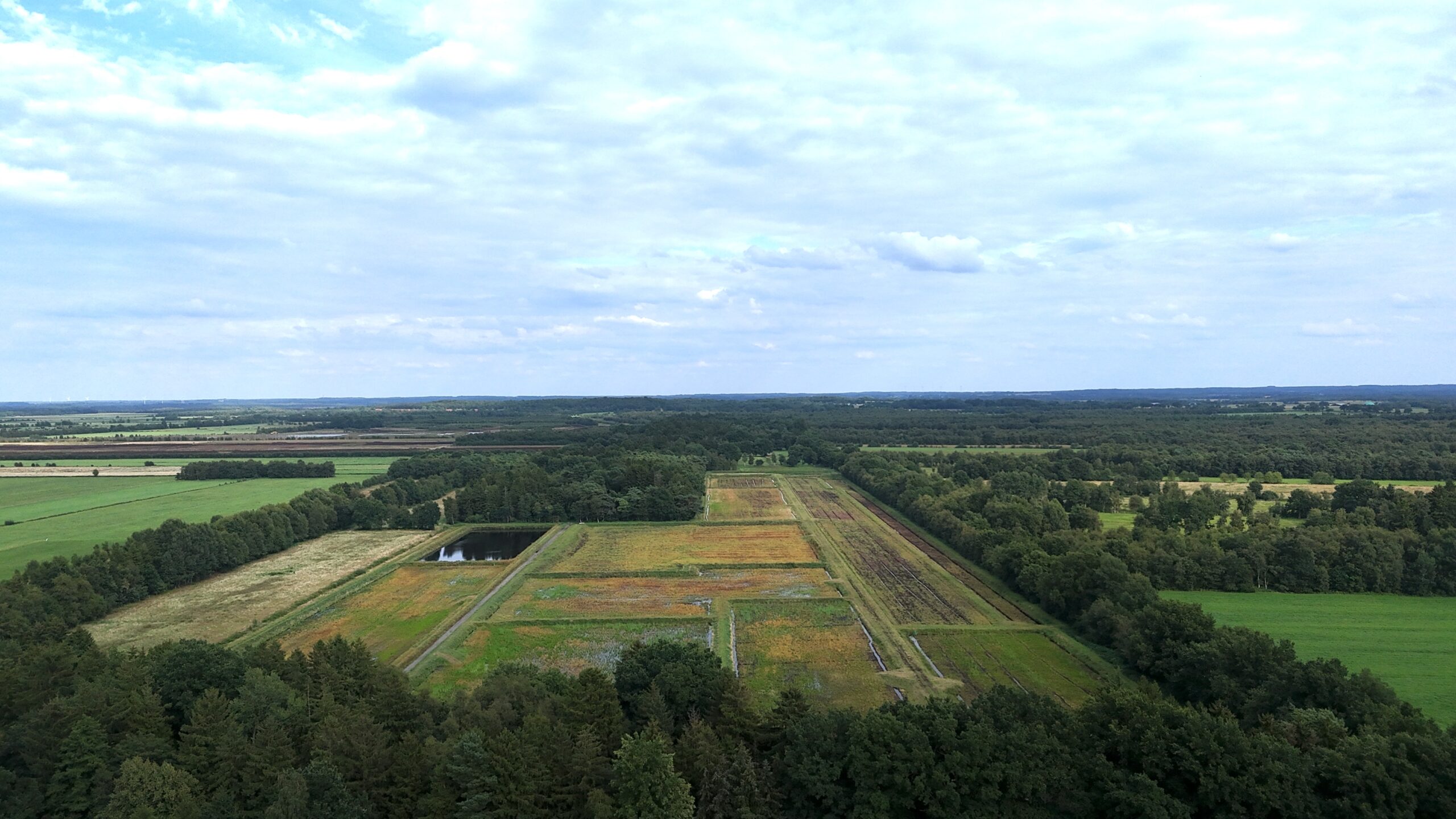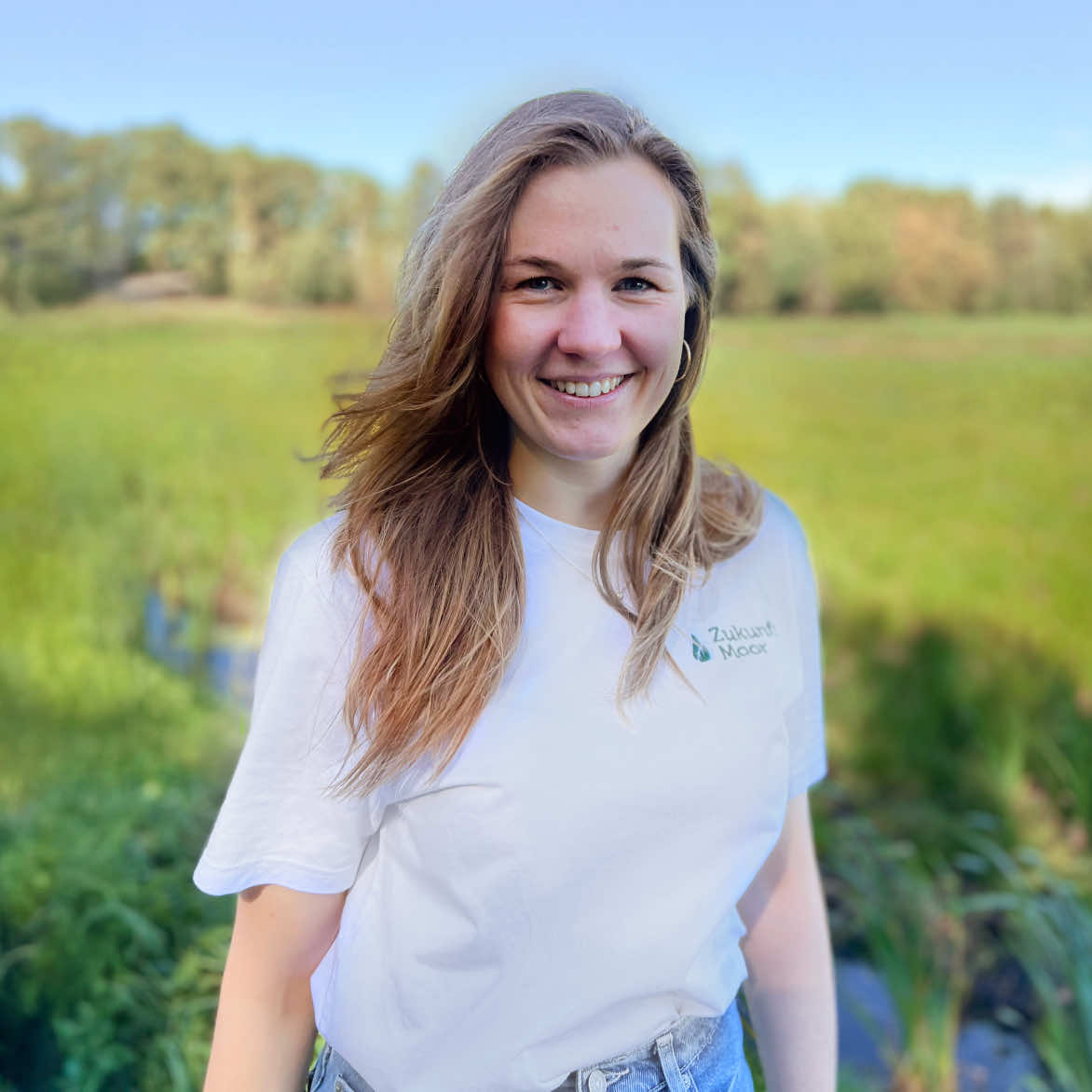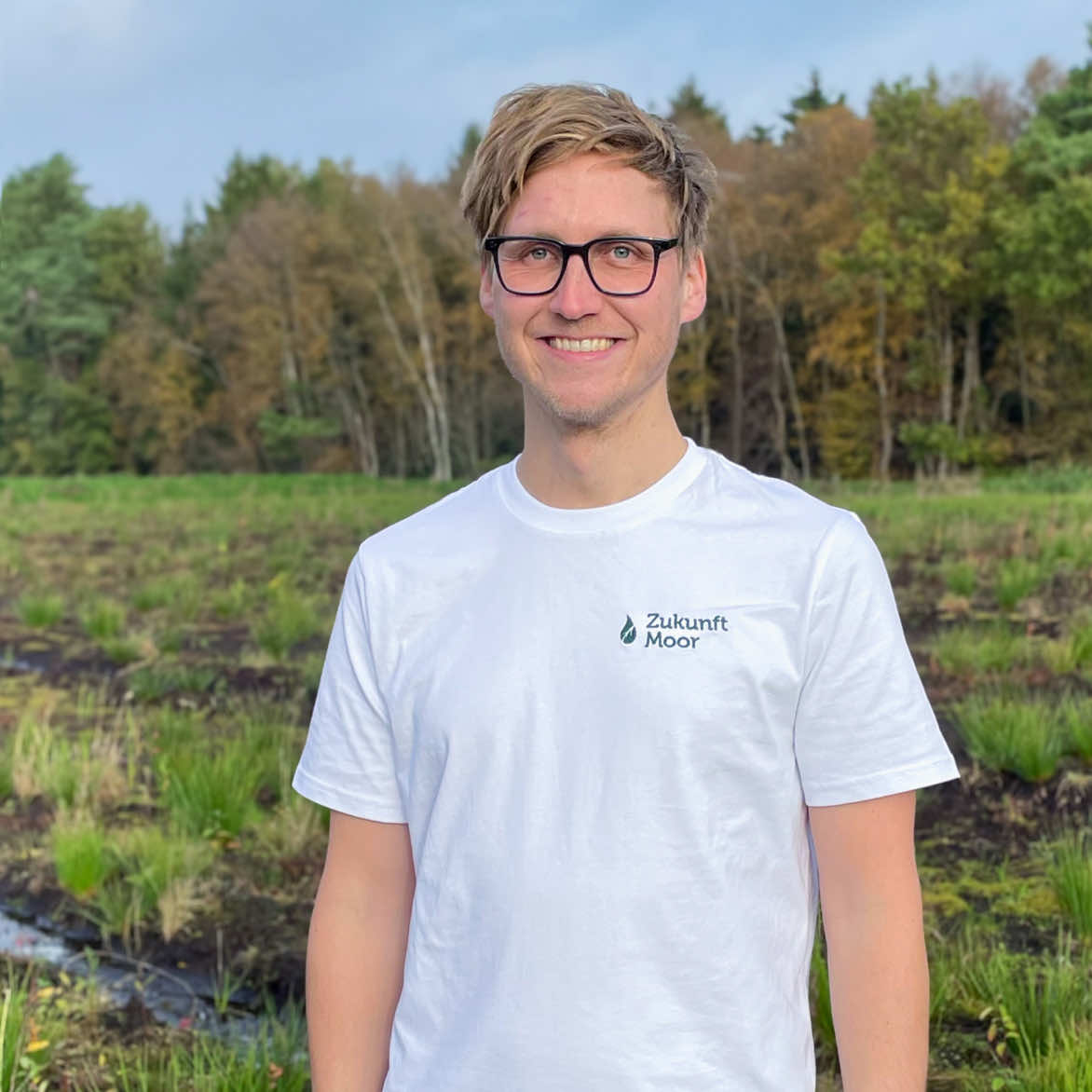Welcome to ZukunftMoor – The Future of Peatlands
We rewet drained peatlands and cultivate sphagnum moss. That’s how we reduce greenhouse gas emissions, enable climate-friendly growing media and agriculture in peatland regions.

We farm on rewetted peatlands in Northern Germany.

Our sphagnum moss farm in Gnarrenburg
In April 2024, we started our operations in the peatland heartland of Gnarrenburg in Northern Germany. The „Gnarrenburger Moor“ was drained back in the 18th century for agriculture and peat extraction. It is part of the „Teufelsmoor“, Lower Saxony's largest peatland area. Today, a large part of it is used as grassland for dairy cattle farming. The peatland and its history are an integral part of our regional culture.
A few months later, we established our sphagnum moss pilot farm encompassing 13.4 hectares. We rewetted a drained area that had previously been intensively farmed as grassland. We destroyed drainages, created polders and installed a water management system to retain the water in the area.

Numerous helpers supported us over weeks to place sphagnum seedlings on our pilot plot. The sphagnum moss will grow into a seamless carpet over the coming years. Then, we will be able to harvest the moss regularly.


August 2024: drained. August 2025: 90% of construction work completed.
By rewetting, we are avoiding 440 tonnes of CO₂ equivalents per year alone on our pilot farm. To reach the same level by planting trees, 35,000 trees would have to be planted.
Sphagnum moss cultivation turns peatlands into climate protectors again.
Accelerate peatland rewetting through a new form of agriculture
Almost 95% of Germany’s peatlands have been drained. Due to the lack of a protective water layer, the carbon from the peat combines with the oxygen from the atmosphere. As a result, drained peatlands are responsible for 7.5% of Germany's greenhouse gas emissions. That is 53 million tonnes per year, equivalent to 25 times the emissions caused by German air traffic. In addition, drained peatlands lose their other important ecosystem services for humans, animals and plants.


Rewetting stops greenhouse gas emissions and revitalises the peatland. Germany will have to rewet more than 50,000 hectares every year to achieve the Paris climate targets. As virtually no rewetting is taking place, these targets are currently being missed clearly.
Farmers cultivate almost 80% of the drained peatland. That’s why rewetting will only be succesful if we find solutions that work for farmers. By demonstrating the viability of sphagnum moss cultivation, we want to prove that wet, peat-preserving agriculture offers an economic alternative.
Sphagnum moss enables sustainable growing media.

The natural alternative to peat
We sell our cultivated sphagnum moss to the soil industry as a peat substitute. The soil industry produces substrates for hobby gardeners and horticulture. Over 50% of the raw materials in products of growing media in Germany consist of climate-unfriendly peat. Existing peat alternatives do not come close to the quality of peat and are becoming scarcer and more expensive. Our solution: sphagnum moss.
Sphagnum moss grows naturally on wet peatland and is the precursor to peat. For this reason, the moss has similar properties to peat, more so than other substitutes. However, as there is no cultivation, there is no relevant supply in Germany and Europe. We seek to change this by rewetting drained peatlands in northern Germany and cultivating sphagnum moss on them.
Our objective is to produce sufficient quantities of sphagnum moss as an ingredient for climate-friendly substrates and thus enable the soil industry to phase out peat. Over time, we intend to support other farms in rewetting their peatlands and switching to sphagnum moss cultivation.
Wet peatland farming creates positive impact.
Climate

We avoid around 50 tonnes of CO₂ equivalents per hectare and year by rewetting and replacing peat in substrates with sphagnum moss. We determine and monitor the climate impact jointly with our scientific partners.
Environment

Rewetted peatlands recreate habitats for insects, birds, amphibians and plants. Our sphagnum moss captures rain like a sponge and protects against droughts and floods. We measure biodiversity enhancement and water retention with partners and innovative technologies.
Region

An important aim of our sphagnum moss farm is to demostrate the economic viability of moss cultivation on rewetted peatlands. By developing the sphagnum moss value chain and collaborating with regional stakeholders we aim to preserve the agricultural community in peatland regions.
We work in wellies and on our laptops.

Lucas Gerrits

Julia Kasper

Paul Waldersee

Birgit Blocksdorff

Florian Forstmann

Niko Waesche

Josephine Reising

Larissa Siepmann

Elea Erdtmann

Marten Beiermann
Scientific Partners
Press Coverage
Awards
Let’s collaborate.
Financial
support

Make a meaningful impact by supporting climate protection, biodiversity enhancement and sustainable water management through our carbon credit program. Your contribution directly funds a nature-based solution – the rewetting of drained peatlands in Northern Germany.
Provide
peatland

Get in touch with us if you would like to make a drained raised bog area of 15 hectares or more available for sphagnum moss cultivation. Do you own 15+ hectares of drained raised bog land? Partner with us to transform it into productive sphagnum moss cultivation sites.
Research &
development

Join our innovative projects focused on scaling sustainable solutions. We're seeking partners to help develop seeding materials, design specialized machinery and conduct essential research.
Contact
We rewet drained peatlands and cultivate sphagnum moss. That’s how we avoid greenhouse gas emissions, enhance biodiversity, produce a climate-friendly peat alternative and support agricultural communities in peatland regions.
ZukunftMoor would like to thank Frédéric Ranft (website design), Kristina Steiner (photographs) and Rasmus Jessen (film).
Imprint